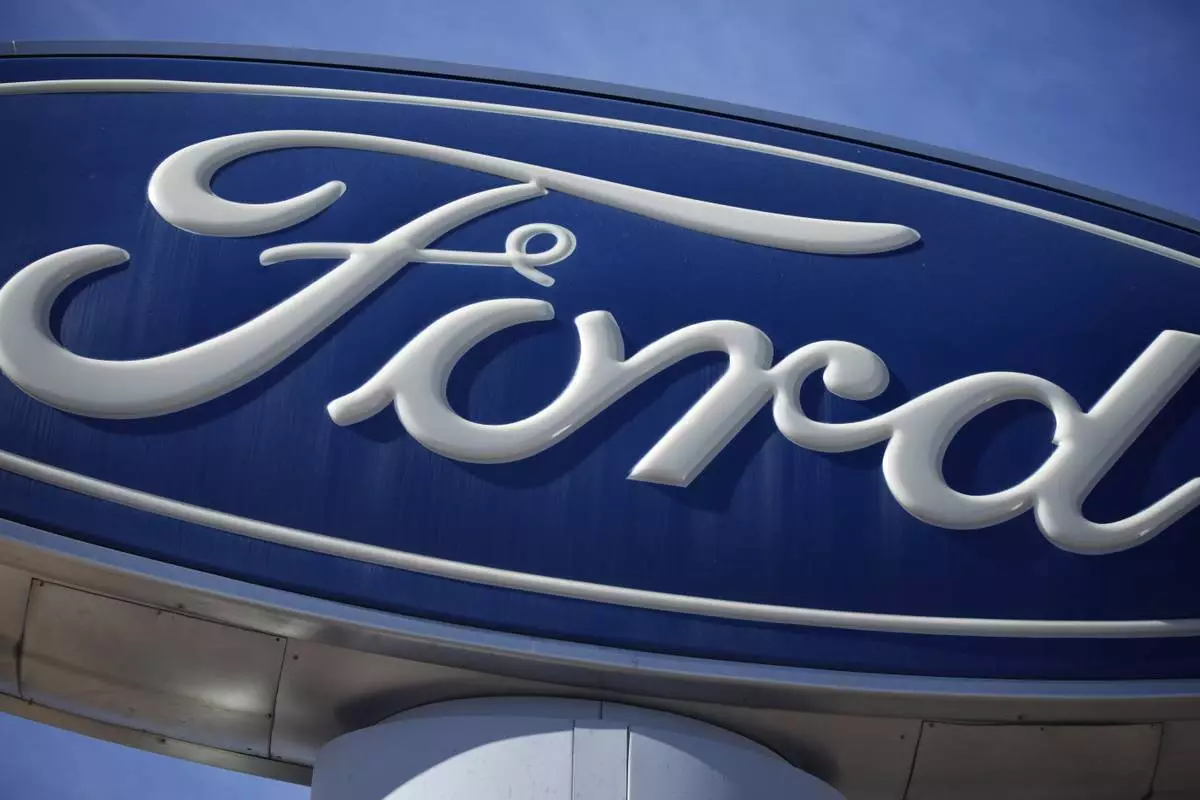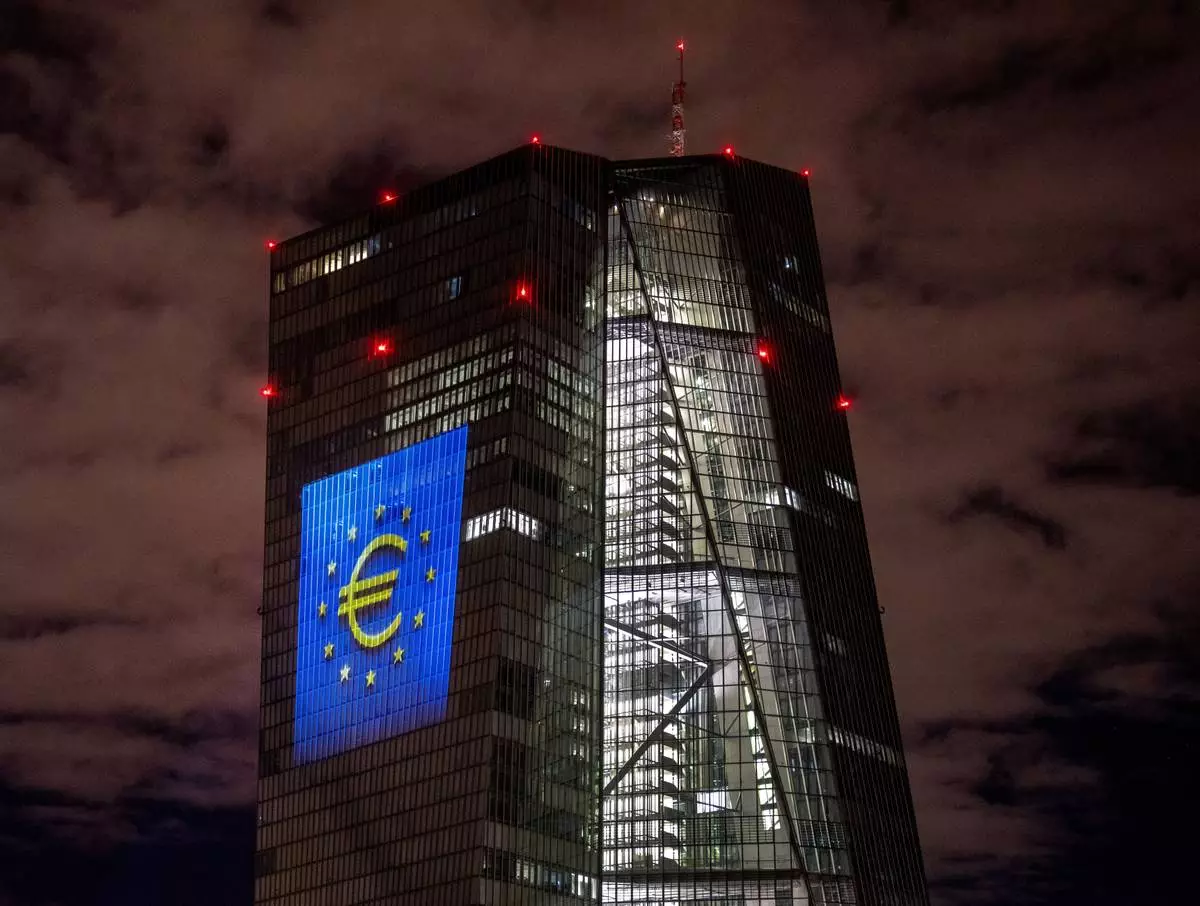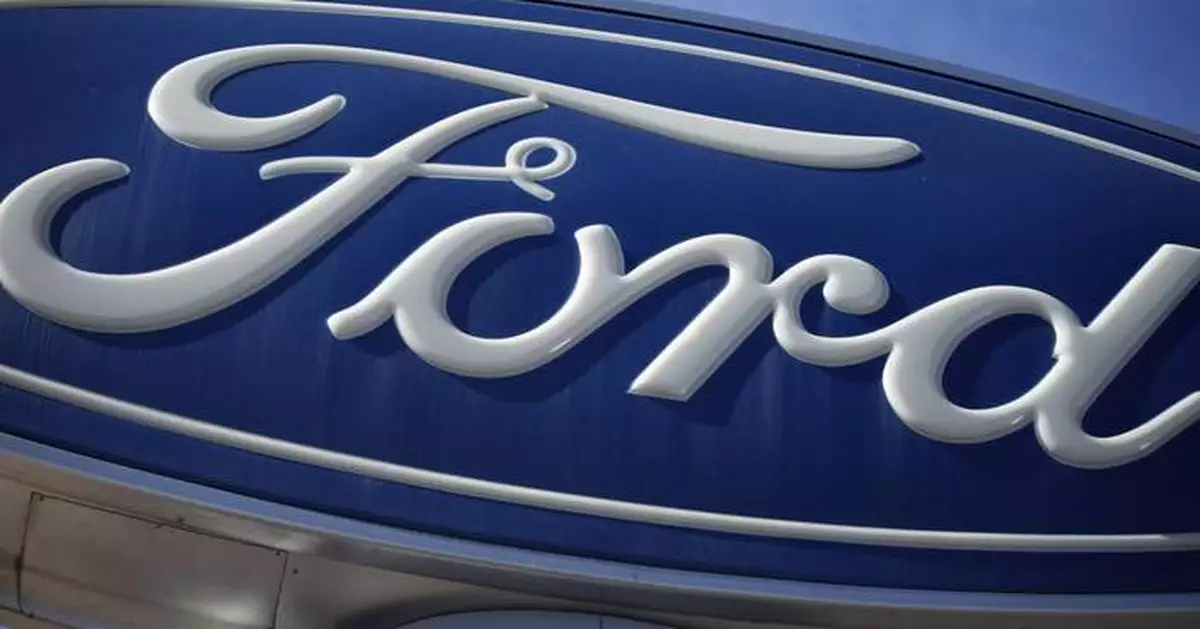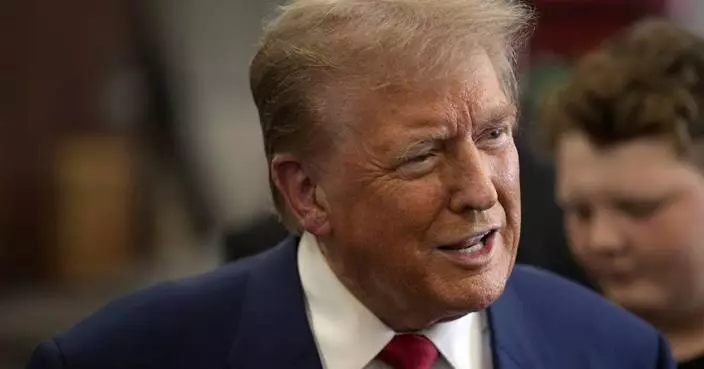DETROIT (AP) — Facing competition from automakers with lower costs, Ford Motor Co. is shifting its electric vehicle strategy and now will focus on making two new electric pickup trucks and a new commercial van. The company says all will cost less, have longer range and be profitable before taxes within a year of reaching showrooms.
Ford, which is losing millions on its current EVs, gave few details about the new products. But it said production of its next generation full-size electric pickup truck in Tennessee will be delayed 18 months, until 2027.
The company also says it won't build fully electric three-row SUVs due to high battery costs, but instead will focus on making those vehicles as gas-electric hybrids.
The other new pickup will be mid-sized, based on new underpinnings developed by a small team in California. It also will go on sale in 2027. Production of the unspecified van will start at an assembly plant west of Cleveland in 2026.
The changes will force Ford to write down $400 million of its current assets for big electric SUVs, and it also expects to have additional expenses of up to $1.5 billion.
“We're committed to creating long-term value by building a competitive and profitable business,” Chief Financial Officer John Lawler said in a statement.
The company also said it will cut capital spending on EVs. It now will spend 30% of its annual capital budget to develop them rather than the current 40%.
Ford, which has long been talking about making profitable EVs, lost $2.46 billion on them in the first half of the year, dragging down profits from its gas-powered and commercial units.
The company said in a prepared statement that the global EV market is changing rapidly, and it must evolve to compete with Chinese automakers that have lower production and engineering costs. At the same time, current buyers are more cost-conscious than early adopters, and automakers are introducing more EVs.
“These dynamics underscore the necessity of a globally competitive cost structure while being selective about customer and product segments to ensure profitable growth and capital efficiency,” the company said.
Ford also said it will build more commercial and consumer vehicles off of new, more affordable EV underpinnings. More details will be released at an event in the first half of next year.
Electric vehicle sales in the U.S., Ford's most profitable market, are still growing but have slowed as more practical consumers worry about range and the ability to recharge while traveling. Market leader Tesla Inc. has cut prices, forcing others to follow.
U.S. electric vehicle sales overall rose about 7% during the first half of the year to 599,134, Motorintelligence.com reported. EVs accounted for 7.6% of the U.S. new vehicle market, about the same as it was for all of last year. Lease deals, which include federal tax credits, helped to boost sales.
Sales of gas-electric hybrids skyrocketed 35.3% from January through June to 715,768, eclipsing electric vehicle sales.
That was part of the reason Ford changed strategy to go with hybrids on the big SUVs. Hybrids, the company said, have profitability that is similar to gas vehicles, which Ford will continue building.
Shares of Ford rose 2.1% in trading Wednesday.

FILE - A Ford company logo on a sign at a Ford dealership in southeast Denver, Oct. 24, 2021. (AP Photo/David Zalubowski, File)
FRANKFURT, Germany (AP) — With inflation subsiding, the European Central Bank cut interest rates again on Thursday to prop up tepid growth with lower borrowing costs for companies and home buyers. The U.S. Federal Reserve likely won’t be far behind in joining the rate-cutting process.
The bank’s rate-setting council lowered the deposit rate from 3.75% to 3.5% at a meeting at its skyscraper headquarters in Frankfurt.
It was the second rate cut as the bank starts to withdraw some of the swift rate increases it imposed to snuff out a burst of double-digit inflation that broke out after Russia cut off most natural gas supplies over its invasion of Ukraine.
But experts don't expect a rapid series of rate cuts from either the ECB or the Fed central bank to anywhere near the rock-bottom levels from before the 2020 outbreak of the COVID-19 pandemic. They say the ECB will tiptoe, rather than slash, and might cut rates only one more time this year. Inflation's down with the help of lower oil prices.
Inflation in the 20 countries that use the euro currency fell to 2.2% in August, not far from the ECB’s 2% target, down from 10.6% at its peak in October, 2022.
At her post-decision news conference, bank President Christine Lagarde said recent data had confirmed “our confidence that we are heading towards our target in a timely manner.”
But she steered clear of any guidance on further cuts. She said the bank would make rate decisions on a meeting by meeting basis depending on incoming information about the economy and was "not pre-committing to a particular rate path.”
Policy makers must keep an eye on simmering inflation among services companies and rising wages as workers push to make up for purchasing power lost to the outburst of inflation that followed the end of the pandemic.
The ECB cut once in June and then hit pause in July before going on summer break in August. The rate-setting council led by President Christine Lagarde has to juggle concerns about a disappointing outlook for growth against - which argues for cuts - against the need to make sure inflation is going to reach the bank’s 2% target and stay there - which would support keeping rates higher for a bit longer.
Consumer prices spiked after Russian cut off most natural gas shipments to Europe over its February, 2022 invasion of Ukraine, sending utility bills higher. The rebound from the pandemic also led to bottlenecks in supplies of parts and raw materials, further boosting inflation that then spread more broadly to services, a broad category that includes medical care, personal services such as haircuts, restaurants, hotels and entertainment.
The ECB and the Fed responded with swift rate rises, the ECB bringing its benchmark rate to a record high of 4%, since cut in June to 3.75%.
The central bank’s benchmark rate strongly influences what private-sector banks pay to borrow - and through that rates across the rest of the economy. Higher rates cool inflation by making it more expensive to borrow and buy things, holding back price rises. But high rates can slow growth, and that worry is coming into focus.
Higher rates in Europe and the U.S. have meant increased mortgage costs for home buyers, and higher payments for people who run credit card balances or buy cars on credit. But they have been a boon to savers and retirees who like interest income and are getting visible returns on their bank holdings or money market accounts after years of zero returns.
The Fed is also expected to make a first cut in its benchmark rate at its Sept. 17-18 meeting from a 23-year high of 5:25%-5.5%. Consumer prices rose 2.5% in August from a year earlier, down from 2.9% in July. It was the fifth straight annual drop in inflation. Core inflation excluding volatile fuel and food - which can be a better guide - was higher at 3.2%.
“The long-awaited Fed easing cycle is upon us,” said Brian Coulton, chief economist at Fitch Ratings, but the Fed rate-setters “will be cautious after the inflation challenges of the past few years. The pace of rate cuts will be gentle and monetary easing won’t do much to boost growth next year.”
Europe growth has been sluggish, at 0.3% in the second quarter of this year and a roughly 1.0% annual rate based on performance in the first half. That follows more than a year of near-zero stagnation. Hopes for a more robust pickup have been dampened by recent indicators of business and consumer sentiment, and by a stream of bad news from the eurozone’s biggest economy, Germany.
Germany contracted by 0.1% in the second quarter and its outlook remains gloomy amid a global slowdown in manufacturing. On top of that come long-term factors such as an ageing population, shortage of skilled workers, lagging implementation of digital technology, and excessive bureaucracy that slows down business creation and expansion. Major employer Volkswagen has dropped its no-layoffs pledge that was to run through 2029 as it seeks to cut costs, and has warned it may need to close one or more factories in Germany amid weaker demand for its new electric vehicles in Europe and in China.

FILE - A light installation is projected onto the building of the European Central Bank during a rehearsal in Frankfurt, Germany, Thursday, Dec. 30, 2021. (Photo/Michael Probst, File)











